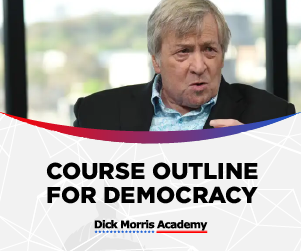THE SHAPE OF THE GOP RACE
The key question going forward is how to arrange the semi-finals and the seeding of the contest. There are three possibilities, all involving Rick Perry. Is the Texas governor a Tea Party/Evangelical candidate competing with Bachmann? Or is he a Party Establishment/Job Creating candidate competing with Romney? Or is a he a little bit of both?
Perry could vie with Bachmann in the Tea Party semi-final spinning off his evangelical and fiscal conservatism credentials. This semi final will be held in Iowa. But the risk for Perry is that Michele is very strong there.
Or he could vie with Romney in the Establishment Party semi-final because his is the Governor of the largest Red state and a card carrying member of the political establishment with the ability to take the jobs issue away from Mitt. This semi-final will be held in New Hampshire. But the risk for Perry is that Romney is pretty far ahead already and Rick’s accent may not play well in the Granite State.
Or Perry could try to compete in both semi-finals and show strength in each. Even if he finished second in Iowa and in New Hampshire, he could win South Carolina and be in the finals.
Or Perry could fall between two chairs and fail. It is easy to see him finishing third or fourth in Iowa behind Bachmann, Romney, or even Ron Paul or Herman Cain and third in New Hampshire behind Romney and Bachmann. In that case, a South Carolina win would only establish him as a regional candidate a la Mike Huckabee in 2008.
In any case, it is way, way, way too early to whittle the Republican presidential race down to the current three front runners: Mitt Romney, Michele Bachmann, and Rick Perry. It is true that Romney and Bachmann have earned front runner status and Perry has vaulted into it, but the efforts of the mainstream media to focus the race on these three alternatives leaves out a lot that could happen over the next four months.
Rick Santorum has gained a new lease on life with a feisty debate performance. He has found a foil in Ron Paul. By engaging the Texas Congressman over his assertions that Iran does not want to develop nuclear weapons and that we should do nothing to stop them from doing so, Santorum showed his verve, intellect, and grasp of the issues. He woke up from his soporific performance in the two earlier debates. And there is a lot of debating left to do.
Herman Cain still has a vast reservoir of support among the Tea Party activists and may yet fashion a debate performance to match the eloquence of his speaking style. He has the charisma, background, forceful speaking style, and knowledge to move into contention and may yet do so.
And then there’s Newt. No matter what, he is still the smartest candidate out there and the one best equipped to whip Obama in a debate. His campaign, as Chris Wallace justifiably called it, is still a “mess.” And he seems to be pinning his unique selling proposition on his Washington experience – quite the opposite of what voters want these days. But you can’t put Newt in front of a camera this often without his brilliance, knowledge of issues, background, and unique facility of expression showing through eventually.
And don’t count on the field dwindling quickly. Pawlenty’s withdrawal may indicate that the fruits are falling early this year, but not necessarily. The usual reason candidates pull out is that they can’t raise funds. But money is not the key factor in this contest – at least not yet. Debating skill is the essential ingredient right now. This GOP contest, as we predicted in Revolt! is being waged over cable television in the debates among the candidates. And the second tier candidates are damn good debaters. Don’t count them out.






